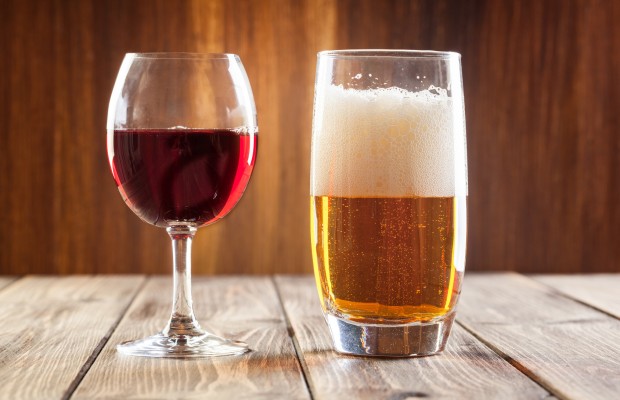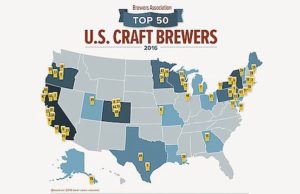Yeast, Wine and Beer: The Fascinating Story Behind Your Favorite Libations

Throughout History, men have used to their benefit the biological properties of a tiny fungus called yeast to produce wine and beer from grains, fruits, and even bread. Don’t be too quick to downplay the importance of booze on Modern History. According to Claude Lévy-Strauss, the invention of mead, better known as “honey wine” is what defines the transition to Civilization.
The ancestor of all fermented beverages, mead, was produced in North India during the Vedic period between 1700 and 1100 BC. During the Golden Age of Ancient Greece, it was the beverage of choice, the nectar that would bring men closer to the Gods and that would climax during the Bacchanals, notoriously decadent wine orgies.
The Indians and the Greeks were not the only ones to experiment with fermentation: the Celts, Saxons, and Vikings also produced the beverage. Similarly, in Egypt, Babylon, Rome, and China, people produced wine from grapes and beer from malted barley.
Fast forward thousands of years. French chemist Louis Pasteur demonstrated the role of yeast in fermentation in 1857. According to him, wine and beer, like other fermented beverages, result from the action of living yeast transforming glucose into ethanol. Not only that: only microorganisms are capable of converting sugar into alcohol from grains and fruits, a process that happens with no oxygen at all.
Based on archeological discoveries, however, it seems more probable that mankind’s first encounter with alcoholic beverages was the result of serendipity.
What men understood was that keeping fruits and grains for long periods of time in covered buckets resulted in wine and beer, but how it all worked remained a mystery.
The process had its own name, fermentation, from the Latin word fervere, “to boil.” The name originated from the observation of bubbles that were seen during the fermentation process, almost as if crushed grapes were boiling.
With little knowledge of what fermentation really was, making fermented beverages was, more than anything, an art: if the combination did not stand long enough, the product contained no alcohol; but if left for too long, it spoiled and was unfit for consumption. Through empiric investigation, men discovered that temperature and air exposure were critical to the fermentation mechanism.
Winemakers would also use their feet to crush the grapes: they basically passed on microorganisms from their feet into the concoction.
It wasn’t until the 17th C. that Antonie van Leeuwenhoek, the father of microbiology, would develop a microscope that would enable scientist to observe these microorganisms. It was in 1755 that they found a tiny, single-celled eukaryotic fungus that is invisible to the naked eye: yeast.
In 1789, Antoine Lavoisier, a French chemist, found the relationship between sugars on alcohol: he realized that the majority of sugars converted into alcohol; the remainder produced carbon dioxide. However, chemists still didn’t quite fathom the importance of yeast in fermentation. According to them, yeast helped trigger the process, but played no role in it.
It wasn’t until another French chemist got involved, Joseph-Louis Gay-Lussac, that scientists realized that yeast considerably changed throughout the process. Based on Gay-Lussac’s discoveries, yeast multiplies, or gemmates.
However, a major breakthrough came from Louis Pasteur, the first to demonstrate that wine and beer result from the action of living yeast converting glucose into ethanol. He concluded that fermentation is a vital process, which he called “respiration without air.” He also established the existence of two kinds of fermentation: alcoholic and lactic acid. The former stems from the action of live yeast; the latter, by the action of bacteria.
Pasteur, however, never managed to extract the fermentation enzyme from yeast: that happened in 1897, when German chemist Eduard Buechner discovered that “dead” liquid would ferment a sugar mixture, producing carbon dioxide and alcohol – just like live yeast. In short, fermentation stems from enzymes produced by microorganisms.
More surprising is that the action of yeast results in various alcohol content, tastes, and kinds of alcohol. As yeast multiplies and continues to metabolize sugar, the accumulation of alcohol becomes toxic to the yeast cells.
Most yeast can tolerate an alcohol concentration of 10 to 15% – after that, the yeast dies. This is why this is the most common level in most wines and beers. However, brewers and wine makers can select more resistant strains of yeast to produce more concentrated libations, which can exceed 21% of alcohol.
Also, since it was discovered that yeast impacts the flavor and aroma of fermented beverages, winemakers and brewers have been picking from the hundreds of varieties and strains of yeast. The most common types of beer yeast are ale yeast and lager yeast.
Ale yeasts are generally “top-fermenting yeasts”: they rise to the surface during fermentation, creating a very thick, rich yeast head. They produce brewing ales, porters, stouts, Altbier, Kölsch, and wheat beers.
Lager yeasts are “bottom” yeasts: they multiply less rapidly than ale yeasts and tend to settle out to the bottom of the fermenter as fermentation nears completion. Some common brews are Pilsners, Dortmunders, Märzen, Bocks, and American malt liquors.
Meanwhile, byproducts of yeast, to impact the flavors of beer: diacetyl lends to brews the aroma of butterscotch; acetaldehyde, green apple aroma; and sulfur, an odor reminiscent of burnt matches.
Winemakers are more skeptical on the impact of yeast on the flavor profiles of wine. It has only been recent, however, that Thomas Henick-Kling, Ph.D. and Professor at Cornell University has demonstrated that yeast does influence the bouquet and flavor profile of wine.
According to him, the strongest the wine with distinct varietal characters, the more influence yeast has on the final product. Reversely, you won’t notice much change with flavor-neutral grapes, or a strong varietal grape with huge yields – the only difference, however, will be in the number of fermentation esters a strain of yeast produces.
However, it takes between six months to a year to start noticing their impact on wine flavor – but the effects, Henick-Kling claims, are permanent. With so many exciting discoveries, it is hard to acknowledge that we probably have more to learn about the fascinating relationship between yeast and wine and beer.
Wine making and beer brewing may be huge and profitable industries today, but the fact that these traditions have stemmed from ancient and empirical knowledge should bring respect to the pioneers who developed the libations that have shaped our civilizations, and to the artisans who honor their legacy and the craft – everyday.



















